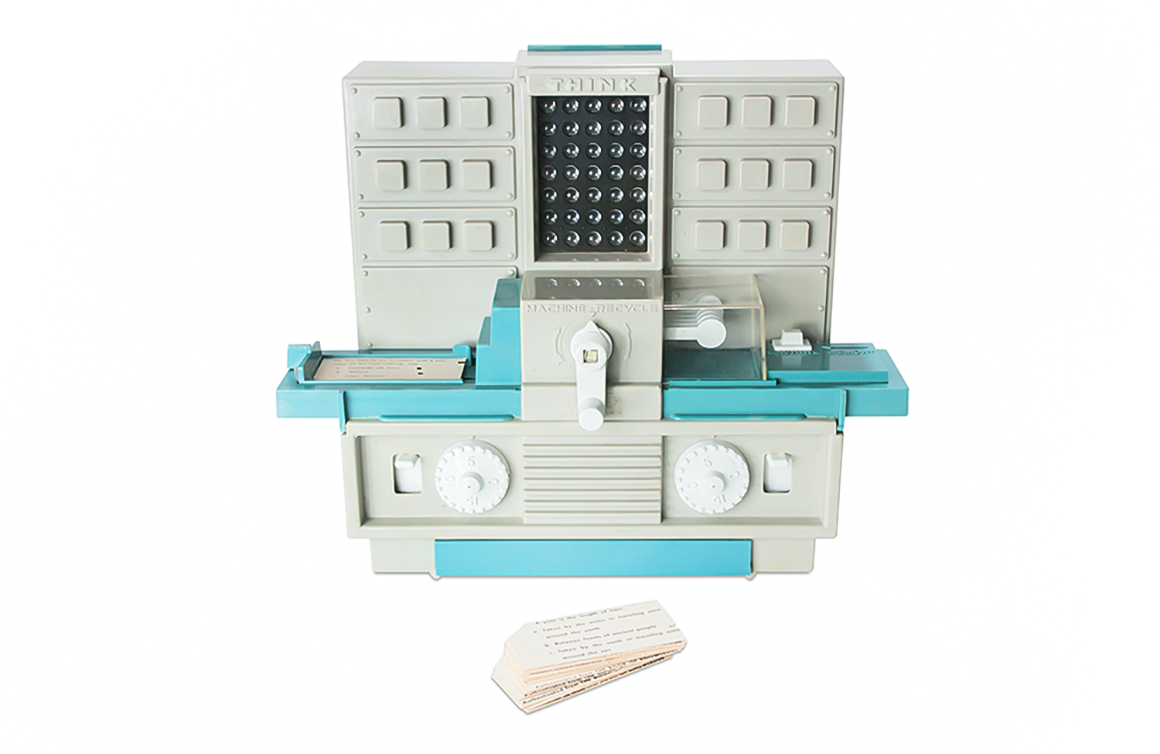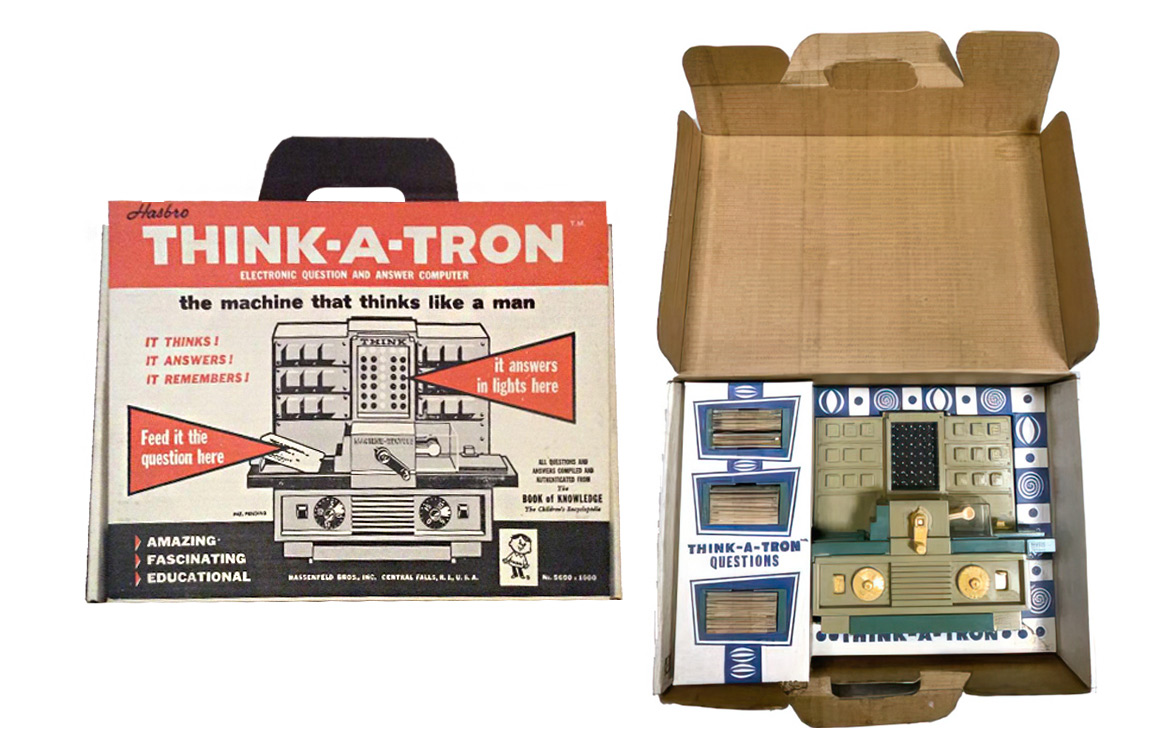Released in 1960, Hasbro’s Think-a-Tron was inspired by the mammoth room-filling mainframe computers of its day. Powered by two D-batteries, it was one of the first educational computer-based toys marketed to children. Since computers were still relatively unfamiliar to the general public, Hasbro added to the intrigue by marketing the Think-a-Tron as “the machine that thinks like a man.”
Like real computers of the era, the Think-a-Tron operated with punch cards – 150 double-sided cards came with the game. Each side contained either a multiple choice or true/false question. All questions and answers were drawn from The Book of Knowledge: The Children’s Encyclopedia, a popular encyclopedia set at the time from The Grolier Society Inc.
Kids matched wits with the Think-a-Tron by first taking turns guessing the answer to a question on a punch card. Then, they fed the card into the Think-a-Tron, which would “read” the card and provide the answer. The answer panel on the front of the toy lit up to display the letter that corresponded to the correct answer on the card. It was an impressive display of “compute power” for a toy at the time. Two dials on the front of the Think-a-Tron were used to keep score.
Like most trivia games, repeated Think-a-Tron play often resulted in exhausting the 300 available questions provided. To keep things fresh, Hasbro marketed additional question packs for the toy, which were sold in sets of 50 questions.
Note: If you buy something using the eBay link in this story, we may earn a small commission. Thank you for supporting independent toy journalism!


